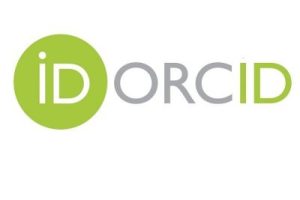MATHEMATICAL MODEL OF THE BANKING FIRM AS TOOL FOR ANALYSIS, MANAGEMENT AND LEARNING
DOI:
https://doi.org/10.14308/ite000443Keywords:
banking firm, ALM models, mathematical modelling of cash flow accountSAbstract
A bank is rather a complex system. It is caused by a considerable number of financial flows and the funds, having a various dynamic and probabilistic characteristics. Stable functioning of the system is provided due to hierarchy, external (prudential supervision) and internal regulators and restrictions, and feedbacks.
One of the problem solved by models ALM is management of various risks (especially credit risk and interest-rate risk), including the problem of default probability decrease.
The approach to mathematical modeling of cash flow accounts in assets and liabilities of the commercial bank based on the partial differential equations is novel and has no analogues in the literature. At the same time, the given approach is quite logic as reflects process of change of actives simultaneously in time and on "age". Depending on concrete theoretical or practical problems the given approach can be realized in the various modifications, two of which are presented in this paper.
Downloads
Metrics
References
1. Chi G., Dong H., Sun X. Decision-making Model of Bank’s Assets Portfolio based on Multi-period Dynamic Optimization. Systems Engineering-Theory&Practice. 2007. Vol. 27, N 2, pp. 1-16.
2. Kruger M. A Goal Programming Approach to Strategic Bank Balance Sheet Management. Banking, Financial Services and Insurance. SAS Global Forum 2011. Paper 024-2011.
3. Kosmidou K., Zopounidis C. Asset Liability Management Techniques. //Handbook of Financial Engineering. Springer Science+Business Media, LLC 2008, pp. 281-300.
4. Mukuddem-Petersen J., Petersen M.A. Bank management via stochastic optimal control. Automatica 2006. Vol. 42, pp. 1395 – 1406.
5. Mulvey J.M., Shetty B. Financial planning via multi-stage stochastic optimization. Computers & Operations Research. 2004. Vol. 31 pp.1–20.
6. Solyankin A.A. Computerization of the financial analysis and forecasting in bank. М: FinStatInform. 1998. – 96 p. (In Russian).
7. Robinson R.S. BANKMOD: an interactive simulation aid for bank financial planning. J. Bank Res. 1973. Vol.4, N3, pp. 212–224.
8. Moynihan G.P., Purushothaman P., McLeod R.W., Nichols W.G. DSSALM: a decision support system for asset and liability management. Decision Support Syst. 2002. Vol. 33, N1, pp. 23–38.
9. Alekseev I.V., Selyutin V.V. Interactive computer model of dynamics of bank assets and liabilities. Terra Economicus, 2011, Vol. 9, №4, Part 2, pp. 42-47 (In Russian).
</uk>
<en>
1. Chi G., Dong H., Sun X. Decision-making Model of Bank’s Assets Portfolio based on Multi-period Dynamic Optimization. Systems Engineering-Theory&Practice. 2007. Vol. 27, N 2, pp. 1-16.
2. Kruger M. A Goal Programming Approach to Strategic Bank Balance Sheet Management. Banking, Financial Services and Insurance. SAS Global Forum 2011. Paper 024-2011.
3. Kosmidou K., Zopounidis C. Asset Liability Management Techniques. //Handbook of Financial Engineering. Springer Science+Business Media, LLC 2008, pp. 281-300.
4. Mukuddem-Petersen J., Petersen M.A. Bank management via stochastic optimal control. Automatica 2006. Vol. 42, pp. 1395 – 1406.
5. Mulvey J.M., Shetty B. Financial planning via multi-stage stochastic optimization. Computers & Operations Research. 2004. Vol. 31 pp.1–20.
6. Solyankin A.A. Computerization of the financial analysis and forecasting in bank. М: FinStatInform. 1998. – 96 p. (In Russian).
7. Robinson R.S. BANKMOD: an interactive simulation aid for bank financial planning. J. Bank Res. 1973. Vol.4, N3, pp. 212–224.
8. Moynihan G.P., Purushothaman P., McLeod R.W., Nichols W.G. DSSALM: a decision support system for asset and liability management. Decision Support Syst. 2002. Vol. 33, N1, pp. 23–38.
9. Alekseev I.V., Selyutin V.V. Interactive computer model of dynamics of bank assets and liabilities. Terra Economicus, 2011, Vol. 9, №4, Part 2, pp. 42-47 (In Russian).
</en>
Downloads
Published
How to Cite
Issue
Section
License
This work is licensed under a Creative Commons Attribution-NonCommercial-ShareAlike 4.0 International License.































